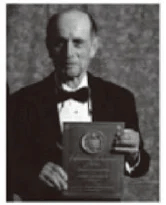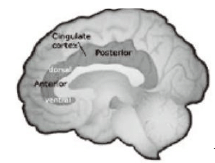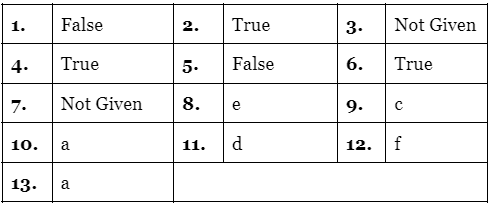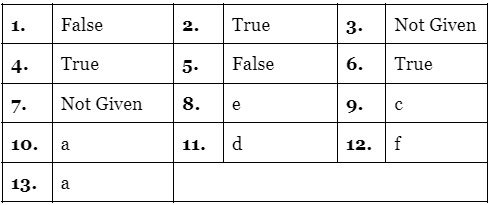Reading for IELTS Academic Practice Test- 20 | Reading Practice Tests for IELTS Academic PDF Download
Section - 1
(A) The Ecotourism Society defines ecotourism as "a responsible travel to natural areas which conserves the environment and improves the welfare of local people". It is recognised as being particularly conducive to enriching and enhancing the standing of tourism, on the basis that this form of tourism respects the natural heritage and local populations and are in keeping with the carrying capacity of the sites.
Cuba
(B) Cuba is undoubtedly an obvious site for ecotourism, with its picturesque beaches, underwater beauty, countryside landscapes, and ecological reserves. An educated population and improved infrastructure of roads and communications adds to the mix. In the Caribbean region, Cuba is now the second most popular tourist destination. Ecotourism is also seen as an environmental education opportunity to heighten both visitors’ and residents’ awareness of environmental and conservation issues, and even to inspire conservation action. Ecotourism has also been credited with promoting peace, by providing opportunities for educational and cultural exchange. Tourists’ safety and health are guaranteed Raul Castro, brother of the Cuban president, started this initiative to rescue the Cuban tradition of herbal medicine and provide natural medicines for its healthcare system. The school at Las Terrazas EcoTourism Community teaches herbal healthcare and children learn not only how to use medicinal herbs, but also to grow them in the school garden for teas, tinctures, ointments and creams. In Cuba, ecotourism has the potential to alleviate poverty by bringing money into the economy and creating jobs. In addition to the environmental impacts of these efforts, the area works on developing community employment opportunities for locals, in conjunction with ecotourism.
South America
(C) In terms of South America, it might be the place which shows the shortcoming of ecotourism. Histoplasma capsulatum (see chapter "Histoplasmosis and HIV"), a dimorphic fungus, is the most common endemic mycosis in the United States, (12) and is associated with exposure to bat or bird droppings. Most recently, outbreaks have been reported in healthy travelers who returned from Central and South America after engaging in recreational activities associated with spelunking, adventure tourism, and ecotourism. It is quite often to see tourists neglected sanitation while travelling. After engaging in high-risk activities, boots should be hosed off and clothing placed in airtight plastic bags for laundering. HIV-infected travelers should avoid risky behaviors or environments, such as exploring caves, particularly those that contain bat droppings.
(D) Nowhere is the keen eye and intimate knowledge of ecotourism is more amidst this fantastic biodiversity, as we explore remote realms rich in wildlife rather than a nature adventure. A sustainable tour is significant for ecotourism, one in which we can grow hand in hand with nature and our community, respecting everything that makes US privileged Travelers get great joy from every step that take forward on this endless but exciting journey towards sustainability. The primary threats to South America’s tropical forests are deforestation caused by agricultural expansion, cattle ranching, logging, oil extraction and spills, mining, illegal coca farming, and colonization initiatives. Deforestation has shrunk territories belonging to indigenous peoples and wiped out more than 90% of the population. Many are taking leading roles in sustainable tourism even as they introduce protected regions to more travelers.
East Africa
(E) In East Africa, significantly reducing such illegal hunting and allowing wildlife populations to recover would allow the generation of significant economic benefits through trophy hunting and potentially ecotourism. "Illegal hunting is an extremely inefficient use of wildlife resources because it fails to capture the value of wildlife achievable through alternative forms of use such as trophy hunting and ecotourism," said Peter Lindsey, author of the new study. Most residents believed that ecotourism could solve this circumstance. They have passion for focal community empowerment, loves photography and writes to laud current focal conservation efforts, create environmental awareness and promote ecotourism.
Indonesia
(F) In Indonesia, ecotourism started to become an important concept from 1995, in order to strengthen the domestic travelling movement; the focal government targeting the right markets is a prerequisite for successful ecotourism. The market segment for Indonesian ecotourism consists of: (i) "The silent generation", 55-64 year-old people who are wealthy enough, generally well-educated and have no dependent children, and can travel for four weeks; (ii) "The baby boom generation", junior successful executives aged 35-54 years, who are likely to be travelling with their family and children (spending 2-3 weeks on travel) — travelling for them is a stress reliever; and (iii) the "X generation”, aged 18-29 years, who love to do ecotours as backpackers — they are generally students who can travel for 3-12 months with monthly expenditure of US$300-500. It is suggested that promotion of Indonesian ecotourism products should aim to reach these various cohorts of tourists. The country welcomes diverse levels of travelers.
(G) On the other hand, ecotourism provide as many services as traditional tourism. Nestled between Mexico, Guatemala and the Caribbean Sea is the country of Belize. It is the wonderful place for Hamanasi honeymoon, bottle of champagne upon arrival, three meals daily, a private service on one night of your stay and a choice of adventures depending on the length of your stay. It also offers six-night and seven-night honeymoon packages. A variety of specially tailored tours, including the Brimstone Hill Fortress, and a trip to a neighboring island Guided tours include rainforest, volcano and off road plantation tours. Gregory Pereira, an extremely knowledgeable and outgoing hiking and tour guide, says the following about his tours: "All of our tours on StKitts include transportation by specially modified Land Rovers, a picnic of island pastries and focal fruit, fresh tropical juices, CSR, a qualified island guide and a full liability insurance coverage for participants.
(H) Kodai is an ultimate splendor spot for those who love being close to mother nature. They say every bird must sing it’s own throat while we say every traveller should find his own way out of variegated and unblemished paths of deep valleys and steep mountains. The cheese factory here exports great quantity of cheese to various countries across the globe. It is located in the center of forest Many travelers are attracted by the delicious cheese. The ecotourism is very famous this different eating experience.
Question 1 -5: Use the information in the passage to match the place (listed A-D) with opinions or deeds below. Write the appropriate letters A-D in boxes 1-5 on your answer sheet. NB You may use any letter more than once.
(a) Cuba
(b) East Africa
(c) South America
(d) Indonesia
Q.1. a place to improve local education as to help tourists
Q.2. a place suitable for both rich and poor travelers
Q.3. a place where could be easily get fungus
Q.4. a place taking a method to stop unlawful poaching
Q.5. a place where the healthcare system is developed
Questions 6-9: Use the information in the passage to match the companies (listed A-D) with opinions or deeds below. Write the appropriate letters A, B, c or D in boxes 6-9 on your answer sheet.
(a) eating the local fruits at the same time
(b) find job opportunities in community
(c) which is situated on the heart of jungle
(d) with private and comfortable service
Q.6. Visiting the cheese factory
Q.7. Enjoying the honeymoon
Q.8. Having the picnic while
Q.9. The residents in Cuba could
Questions 10-13 Summary
Complete the following summary of the paragraphs of Reading Passage, using no more than two words from the Reading Passage for each answer. Write your answers in boxes 10-13 on your answer sheet.
Ecotourism is not a nature ____10____ but a _____11____ tour. The reason why South America promotes ecotourism is due to the destruction of _____12_____ In addition, East Africa also encourages this kind of tourism for cutting the _____13_____ in order to save wild animals.
Section - 2

(A) Aging, it is now clear, is part of an ongoing maturation process that all our organs go through. "In a sense, aging is keyed to the level of vigor of the body and the continuous interaction between levels of body activity and levels of mental activity," reports Arnold B. Scheibel, M.D., whose very academic title reflects how once far-flung domains now converge on the mind and the brain. Scheibel is professor of anatomy, cell biology, psychiatry, and behavioral sciences at the University of California at Los Angeles, and director of the university's Brain Research Institute. Experimental evidence has backed up popular assumptions that the aging mind undergoes decay analogous to that of the aging body. Younger monkeys, chimps, and lower animals consistently outperform then older colleagues on memory tests. In humans, psychologists concluded, memory and other mental functions deteriorate over time because of inevitable organic changes m the brain as neurons die off. Mental decline after young adulthood appeared inevitable.
(B) Equipped with imaging techniques that capture the brain in action, Stanley Rapoport, Ph.D., at the National Institutes of Health, measured the flow of blood in the brains of old and young people as they went through the task of matching photos of faces. Since blood flow reflects neuronal activity, Rapoport could compare which networks of neurons were being used by different subjects. "Even when the reaction times of older and younger subjects were the same, the neural networks they used were significantly different. The older subjects were using different internal strategies to accomplish the same result in the same time," Rapoport says. Either the task required greater effort on the part of the older subjects or the work of neurons originally involved in tasks of that type had been taken over by other neurons, creating different networks.
(C) At the Georgia Institute of Technology, psychologist Timothy Salthouse, Ph.D., compared a group of very fast and accurate typists of college age with another group in their 60s. Since reaction time is faster in younger people and most people's fingers grow less nimble with age, younger typists might be expected to tap right along while the older ones fumble. But both typed 60 words a minute. The older typists it turned out, achieved their speed with cunning little strategies that made them far more efficient than their younger counterparts: They made fewer finger movements, saving a fraction of a second here and there. They also read ahead in the text. The neural networks involved in typing appear to have been reshaped to compensate for losses in motor skills or other age changes.
(D) "When a rat is kept in isolation without playmates or objects to interact with, the animal’s brain shrinks, but if we put that rat with 11 other rats in a large cage and give them an assortment of wheels, ladders, and other toys, we can show— after four days— significant differences in its brain," says Diamond, professor of integrative biology. Proliferating dendrites first appear in the visual association areas. After a month in the enriched environment, the whole cerebral cortex has expanded, as has its blood supply. Even in the enriched environment, rats get bored unless the toys are varied. "Animals are just like we are. They need stimulation," says Diamond.
 One of the most profoundly important mental functions is memory-notorious for its failure with age. So important is memory that the Charles A. Dana Foundation recently spent $8.4 million to set up a consortium of leading medical centers to measure memory loss and aging through brain-imaging technology, neurochemical experiments, and cognitive and psychological tests. One thing, however, is already fairly clear—many aspects of memory are not a function of age at all but of education. Memory exists in more than one form, what we call knowledge-facts—is what psychologists such as Harry p. Bahrick, Ph.D., of Ohio Wesleyan University calls semantic memory. Events, conversations, and occurrences in time and space, on the other hand, make up episodic or event memory, which is triggered by cues from the context. If you were around in 1963 you don’t need to be reminded of the circumstances surrounding the moment you heard that JFK had been assassinated. That event is etched into your episodic memory.
One of the most profoundly important mental functions is memory-notorious for its failure with age. So important is memory that the Charles A. Dana Foundation recently spent $8.4 million to set up a consortium of leading medical centers to measure memory loss and aging through brain-imaging technology, neurochemical experiments, and cognitive and psychological tests. One thing, however, is already fairly clear—many aspects of memory are not a function of age at all but of education. Memory exists in more than one form, what we call knowledge-facts—is what psychologists such as Harry p. Bahrick, Ph.D., of Ohio Wesleyan University calls semantic memory. Events, conversations, and occurrences in time and space, on the other hand, make up episodic or event memory, which is triggered by cues from the context. If you were around in 1963 you don’t need to be reminded of the circumstances surrounding the moment you heard that JFK had been assassinated. That event is etched into your episodic memory.
(E) When you forget a less vivid item, like buying a roll of paper towels at the supermarket, you may blame it on your aging memory. It’s true that episodic memory begins to decline when most people are in their 50s, but it’s never perfect at any age. "Every memory begins as an event," says Bahrick. "Through repetition, certain events leave behind a residue of knowledge, or semantic memory. On a specific day in the past, somebody taught you that two and two are four, but you’ve been over that information so often you don’t remember where you learned it. What started as an episodic memory has become a permanent part of your knowledge base." You remember the content, not the context. Our language knowledge, our knowledge of the world and of people, is largely that permanent or semipermanent residue.
(F) Probing the longevity of knowledge, Bahrick tested 1,000 high school graduates to see how well they recalled their algebra. Some had completed the course as recently as a month before, others as long as 50 years earlier. He also determined how long each person had studied algebra, the grade received, and how much the skill was used over the course of adulthood. Surprisingly, a person’s grasp of algebra at the time of testing did not depend on how long ago he’d taken the course—the determining factor was the duration of instruction. Those who had spent only a few months learning algebra forgot most of it within two or three years.
(G) In another study, Bahrick discovered that people who had taken several courses in Spanish, spread out over a couple of years, could recall, decades later, 60 percent or more of the vocabulary they learned. Those who took just one course retained only a trace after three years. "This long-term residue of knowledge remains stable over the decades, independent of the age of the person and the age of the memory. No serious deficit appears until people get to their 50s and 60s, probably due to the degenerative processes of aging rather than a cognitive loss."
(H) "You could say metamemory is a byproduct of going to school,1’ says psychologist Robert Kail, Ph.D, of Purdue University, who studies children from birth to 20 years, the time of life when mental development is most rapid. "The question-and-answer process, especially exam-taking, helps children leam-and also teaches them how then memory works This may be one reason why, according to a broad range of studies in people over 60, the better educated a person is, the more likely they are to perform better in life and on psychological tests. A group of adult novice chess players were compared with a group of child experts at the game. In tests of then ability to remember a random series of numbers, the adults, as expected, outscored the children. But when asked to remember the patterns of chess pieces arranged on a board, the children won. "Because they’d played a lot of chess, their knowledge of chess was better organized than that of the adults, and then existing knowledge of chess served as a framework for new memory," explains Kail.
(I) Specialized knowledge is a mental resource that only improves with time. Crystallized intelligence about one’s occupation apparently does not decline at all until at least age 75, and if there is no disease or dementia, may remain even longer, special knowledge is often organized by a process called "chunking.1’ If procedure A and procedure B are always done together, for example, the mind may merge them into a single command. When you apply yourself to a specific interest-say, cooking—you build increasingly elaborate knowledge structures that let you do more and do it better. This ability, which is tied to experience, IB the essence of expertise. Vocabulary is one such specialized form of accrued knowledge. Research clearly shows that vocabulary improves with time. Retired professionals, especially teachers and journalists, consistently score higher on tests of vocabulary and general information than college students, who are supposed to be in their mental prime.
Questions 14-17: Choose the correct letter, A, B, c or D. Write your answers in boxes 14-17 on your answer sheet.
Q.14. What does the experiment of typist show in the passage?
(a) Old people reading ability is superior
(b) Losses of age is irreversible
(c) Seasoned tactics made elders more efficient
(d) Old people performed poorly in driving test
Q.15. Which is correct about rat experiment?
(a) Different toys have different effect for rats
(b) Rat’s brain weight increased in both cages
(c) Isolated rat’s brain grows new connections
(d) Boring and complicated surroundings affect brain development
Q.16. What can be concluded in chess game of children group?
(a) They won game with adults.
(b) Then organization of chess knowledge is better
(c) Then image memory is better than adults
(d) They used different part of brain when playing chess
Q.17. What is author's purpose of using "vocabulary study” at the end of passage?
(a) Certain people are sensitive to vocabularies while others aren't
(b) Teachers and professionals won by then experience
(c) Vocabulary memory as a crystallized intelligence is hard to decline
(d) Old people use their special zone of brain when study
Questions 18-23 Summary: Complete the following summary of the paragraphs of Reading Passage, using no more than two words from the Reading Passage for each answer. Write your answers in boxes 18-23 on your answer sheet.
It's long been known that as one significant mental function, _______18_______ deteriorates with age. Charles A. Dana foundation invested millions of dollars to test memory decline. They used advanced technology, neurochemical experiments and ran several cognitive and _____19_____experiments. Bahrick called one form "_______20_______", which describes factual knowledge. Another one called "_______21_______" contains events in time and space format. He conducted two experiments toward to knowledge memory's longevity, he asked 1000 candidates some knowledge of _______22_______, some could even remember it decades ago. Second research of Spanish course found that multiple courses participants could remember more than half of_______23_______they learned after decades, whereas single course taker only remembered as short as 3 years.
Questions 24-27: Use the information in the passage to match the people (listed A-F) with opinions or deeds below. Write the appropriate letters A-F in boxes 24-27 on your answer sheet.
(a) Harry p. Bahrick
(b) Arnold B. Scheibel
(c) Marion Diamond
(d) Timothy Salthouse
(e) Stanley Rapport
(f) Robert Kail
Q.24. Examined both young and old’s blood circulation of brain while testing.
Q.25. Aging is a significant link between physical and mental activity.
Q.26. Some semantic memory of a event would not fade away after repetition.
Q.27. Rat’s brain developed when put in a diverse environment.
Section - 3
The secret of the Yawn

(A) When a scientist began to study yawning in the 1980s, it was difficult to convince some of his research students of the merits of "yawning science." Although it may appear quirky, his decision to study yawning was a logical extension to human beings of my research in developmental neuroscience, reported in such papers as "Wing-flapping during Development and Evolution." As a neurobehavioral problem, there is not much difference between the wingflapping of birds and the face-and body-flapping of human yawners.

(B) Yawning is an ancient, primitive act. Humans do it even before they are born, opening wide in the womb. Some snakes unhinge then jaws to do it. One species of penguins yawns as part of mating. Only now are researchers beginning to understand why we yawn, when we yawn and why we yawn back. A professor of cognitive neuroscience at Drexel University in Philadelphia, Steven Platek, studies the act of contagious yawning, something done only by people and other primates.
(C) In his first experiment, he used a psychological test to rank people on then empathic feelings. He found that participants who did not score high on compassion did not yawn back. "We literally had people saying, ’Why am I looking at people yawning?"1 Professor Platek said. "It just had no effect."
(F) For his second experiment, he put 10 students in an magnetic resonance imaging machine as they watched video tapes of people yawning. When the students watched the videos, the part of the brain which reacted was the part scientists believe controls empathy - the posterior cingulate, in the brain’s middle rear." I don’t know if it’s necessarily that nice people yawn more, but I think it’s a good indicator of a state of mind," said Professor Platek. "It’s also a good indicator if you’re empathizing with me and paying attention."
(E) His third experiment is studying yawning in those with brain disorders, such as autism and schizophrenia, in which victims have difficulty connecting emotionally with others. A psychology professor at the University of Maryland, Robert Provine, is one of the few other researchers into yawning. He found the basic yawn lasts about six seconds and they come in bouts with an interval of about 68 seconds. Men and women yawn or halfyawn equally often, but men are significantly less likely to cover then mouths which may indicate complex distinction in genders." A watched yawner never yawns," Professor Provine said. However, the physical root of yawning remains a mystery. Some researchers say it’s coordinated within the lypothal of the brain, the area that also controls breathing.

(F) Yawning and stretching also share properties and may be performed together as parts of a global motor complex. But they do not always co-occur people usually yawn when we stretch, but we don’t always stretch when we yawn, especially before bedtime. Studies by J. I. P, G. H. A. Visser and H. F. Prechtl in the early 1980s, charting movement in the developing fetus using ultrasound, observed not just yawning but a link between yawning and stretching as early as the end of the first prenatal trimester.
(G) The most extraordinary demonstration of the yawn-stretch linkage occurs in many people paralyzed on one side of their body because of brain damage caused by a stroke. The prominent British neurologist Sir Francis Walshe noted in 1923 that when these hemiplegics yawn, they are startled and mystified to observe that then otherwise paralyzed arm rises and flexes automatically in what neurologists term an "associated response." Yawning apparently activates undamaged, unconsciously controlled connections between the brain and the cord motor system innervating the paralyzed limb. It is not known whether the associated response is a positive prognosis for recovery, nor whether yawning is therapeutic for reinnervation or prevention of muscular atrophy.
(H) Clinical neurology offers other surprises. Some patients with "locked-in" syndrome, who are almost totally deprived of the ability to move voluntarily, can yawn normally. The neural circuits for spontaneous yawning must exist in the brain stem near other respiratory and vasomotor centers, because yawning is performed by anencephalic who possess only the medulla oblongata. The multiplicity of stimuli of contagious yawning, by contrast, implicates many higher brain regions.
Questions 28-32 Summary
Complete the Summary paragraph described below. In boxes 28-32 on your answer sheet, write the correct answer with No MORE THAN THREE WORDS.
A psychology professor drew a conclusion after observation that it takes about she seconds to complete an average yawning which needs ______28______ before a following yawning comes. It is almost at the same frequency that male and female yawn or half, yet behavior accompanied with yawning showing a ______29_______ in genders. Some parts within the brain may affect the movement which also have something to do with ______30______ another finding also finds there is a link between yawn and ______31_______ before a baby was born, which two can be automatically co-operating even among people whose _______32_______ is damaged.
Questions 33-37: Read paragraph A-H. Which paragraph contains the following information ? Write the correct letter A-H for question 33-37
NB: You may use any letter more than once.
Q.33. The rate for yawning shows some regular pattern.
Q.34. Yawning is an inherent ability that appears in both animals and humans.
Q.35. Stretching and yawning are not always going together.
Q.36. Yawning may suggest people are having positive notice or response in communicating.
Q.37. Some superior areas in brain may deal with the infectious feature of yawning
Questions 38-40: Do the following statements agree with the information given in Reading Passage 3? In boxes 38-40 on your answer sheet:
- TRUE if the statement is true
- FALSE if the statement is false
- NOT GIVEN if the information is not given in the passage
Q.38. Several students in Platek’s experiment did not comprehend why then tutor ask them to yawn back.
Q.39. Some results from certain experiment indicate the link between yawning and compassion.
Q.40. Yawning can show an affirmative impact on the recovery from brain damage brought by a stroke.
Answers
Section - 1

Section - 2

Section -3






















